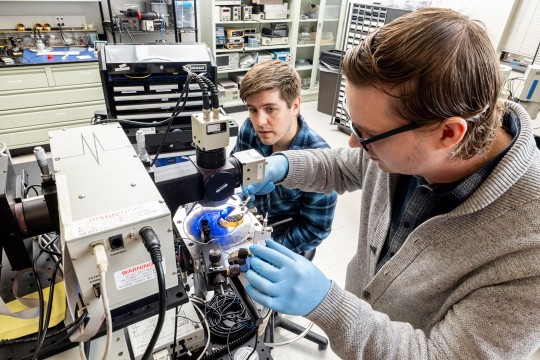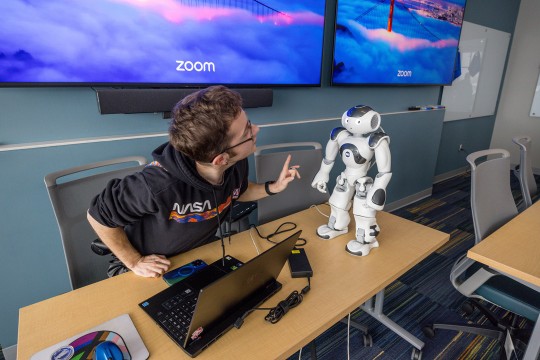Screening for Fevers with Thermal Imaging Technology
Real Life Science: Imaging Science
Thermal infrared images acquired with a FLIR One sensor. The skin's surface temperature is noted at two unique locations, showing the variation in temperature that may be found on the human face. This surface temperature in specific locations may serve as a correlated indicator of core temperature, from which an alert may be raised to indicate that the subject may be presenting a fever.
As the country continues to reopen, ensuring the health and safety of public areas remains a critical concern. Thermal imaging technology is one screening tool being utilized as part of a comprehensive health program.
Companies such as FLIR Systems, CrowdRx, and Thermal Guardian have utilized thermal imaging technology to produce fever screening tools for mass gatherings. These are non-intrusive systems that quickly screen guests as they enter a venue. The thermal imaging system reads the skin’s surface temperature and alerts the host when someone enters with a fever. The host can then ask the guest to leave before infecting others or provide a secondary medical follow up on the spot. The policy is left up to the venue.
This technology can be an important piece of the puzzle as states move towards reopening. It does not detect coronavirus; however, this low-impact screening tool can go a long way in keeping crowded areas safe. The units are portable and can be set up in a variety of locations including schools, concert halls, grocery stores, and airports.
Thermal imaging has been utilized to perform biometrics as each human has unique signatures/patterns in their face that can be used for identification. These systems, when implemented and utilized carefully, can serve as powerful initial screeners to quickly spot individuals that may be presenting a fever within large crowds.
“This technology can go a long way in helping us get back to normal," said RIT professor and Director of the Digital Imaging and Remote Sensing (DIRS) laboratory, Carl Salvaggio.
Students in the RIT imaging science program study thermal imaging as part of the curriculum. Undergraduate and graduate students explore radiometry—how to measure the energy leaving an object due to its temperature—to answer questions about global warming, agricultural crop health, human and industrial activity, heat loss from residential homes, as well as many military and intelligence activities. Many RIT imaging science graduates have worked for companies like NASA, USGS, and NOAA - all of whom utilize thermal imaging.
In addition, imaging sensors that “see” in the thermal infrared wavelength region are studied in the remote sensing classes offered in the RIT Chester F. Carlson Center for Imaging Science and the advanced research carried out by the DIRS laboratory. The DIRS laboratory has served as a key contributor to the thermal infrared imaging that NASA conducts from their Landsat satellites since the early 1980s.








